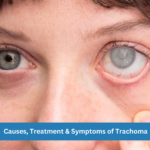Comparing Strabismus (Squint) and Amblyopia (Lazy Eye): What Are the Differences?
The eye problems of amblyopia (lazy eye) and strabismus (crossed eyes) are similar but distinct. Because strabismus is the most prevalent cause of amblyopia and amblyopia frequently occurs alongside strabismus, the two disorders are commonly mistaken. Fortunately, both amblyopia and strabismus can be corrected by an eye doctor’s treatment. These functional vision issues can be treated in various ways, from surgery to glasses.
What Is Squint Eye/Cross-Eye?
Crossed eyes are medically called strabismus. Misaligned eyes can turn inward (esotropia), up, and to the side. Strabismus is most frequent in infants and toddlers and normally goes away by age three. Older children and adults rarely have the squint.
What Is a Lazy Eye?
The lazy eye is amblyopia. Early childhood eye issues cause one-eyed vision loss. When brain-eye communication breaks down, the brain stops processing visual information from one eye. The brain will rely on the stronger eye.
Strabismus Symptoms
Individuals with persistent strabismus are less symptomatic (but not asymptomatic) than those with other functional visual impairments. Typical manifestations of these conditions include:
- A visible shift in gaze
- Subpar capacity for perceiving depth
- Negative effects on your eyesight, such as discomfort or strain
- Headaches
- Impaired or distorted eyesight
- Weakness in the eyes
Amblyopia Symptoms
A lazy eye is more subtle than strabismus and requires a trained look to diagnose. You should visit a doctor if you or your kid experience any of the following symptoms:
- Problems with throwing and catching
- Receipt of depth information inadequate
- Clumsiness
- Eyes closed or narrowed.
- Changing the angle or position of one’s head
- Tired eyes
- Eye strain from focusing too closely
Amblyopia Causes
Refractive errors, strabismus, and cataracts are all potential triggers for the development of amblyopia. When one eye focuses better than the other, when one eye is very nearsighted while the other is significantly farsighted, or when a person has substantial astigmatism, these are all refractive errors.
Strabismus Causes
Crossed eyes are more common in patients with a history of neurological disorders, congenital disabilities, or traumatic brain injuries. Eye or blood vessel injury, Grave’s disease, a stroke, and other muscle and nerve problems can all cause intermittent or persistent strabismus in adults.
Amblyopia Treatment
Amblyopia therapy improves vision. Amblyopia treatment retrains the brain to use the afflicted eye, helping adults and children. Ocular drops to block vision may also be used. Vision Therapy available in Rana Eye Hospital improved vision in lazy eye.
Strabismus Treatment
Treatment options for strabismus range widely. To treat your eye issue effectively, your eye doctor must identify its root cause. You may be recommended corrective lenses or surgery on your eye muscles as part of the treatment.
Conclusion
Choose a reputable eye hospital for squinting and drooping eyes. We hire the best eye doctors to guarantee your pleasure. We deliver the best care and put you at ease.






No Comments